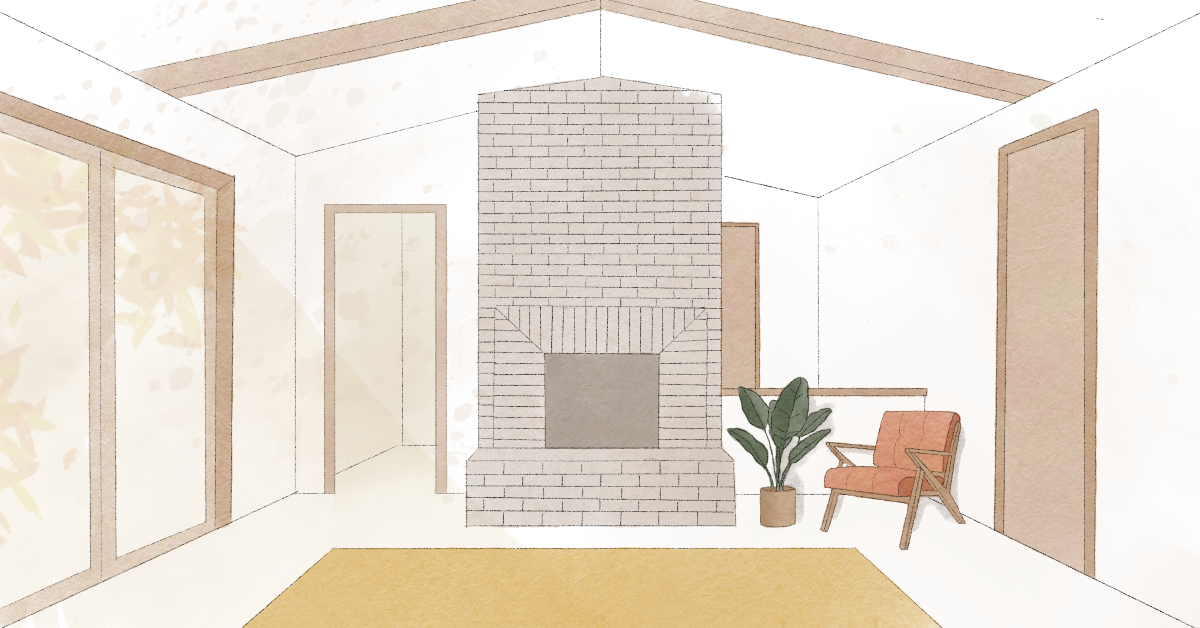
75 Years of Design | The 1970s
Brooke Cleaver April 28, 2025
In honor of our 75th anniversary, we’re taking a closer look at the history of interior design—and the story of Lafayette Interior Fashions. If you’re just now joining us, welcome! Each month, we’re diving into a different era of design and exploring its styles, cultural shifts, and milestones.
This month, we’re stepping into the 1970s: a decade fueled by self-discovery, environmental awareness, and a return to nature. So, pull up a bean bag chair as we explore the rise of houseplants, handcrafted décor, and Lafayette Interior Fashions itself.
The Start of the ‘Me’ Decade
If the 1960s were defined by peace, love, and rock-n-roll, then the 1970s might be better remembered for its sense of resilience despite all of the dread, discontent, and disillusionment surrounding the decade. Historical challenges, like Watergate, inflation, and the subsequent oil crisis, stifled what was left of the swinging sixties optimism, causing many to turn inward. So, while the fight for civil rights waged on, many traded their picket signs and banners for vehicles of personal growth. A new voyage was on the horizon. One that author Tom Wolfe used to define a generation: The quest for self-actualization.
Folks weren’t just asking how they might better the world around them—they were asking how they might better themselves. What followed was a period of deep personalization that influenced everything from the environment to home décor.
A Return to Nature
Following the 1969 Santa Barbara oil spill, which released roughly four million gallons of crude oil into the Pacific Ocean and neighboring coastlines, a new movement was born: The environmentalist movement. The first Earth Day was held the following year, with the National Environmental Policy Act (NEPA) passing shortly after. This newfound appreciation for nature had a profound effect on the country, influencing everything from automobile manufacturing to interior design.
People started filling their homes with houseplants in order to be more at one with nature. Ferns, Hoyas, and spider plants dominated the interior landscape, shrouding every corner and window in various shades of green. Basically, if you could hang it from a basket or drape it over a windowsill, it passed the vibe check of the era. Other popular features included wood-paneled walls (a fan favorite that carried over from the ‘60s), stacked-stone fireplaces, terracotta tiles, exposed wood ceiling beams, and skylights.
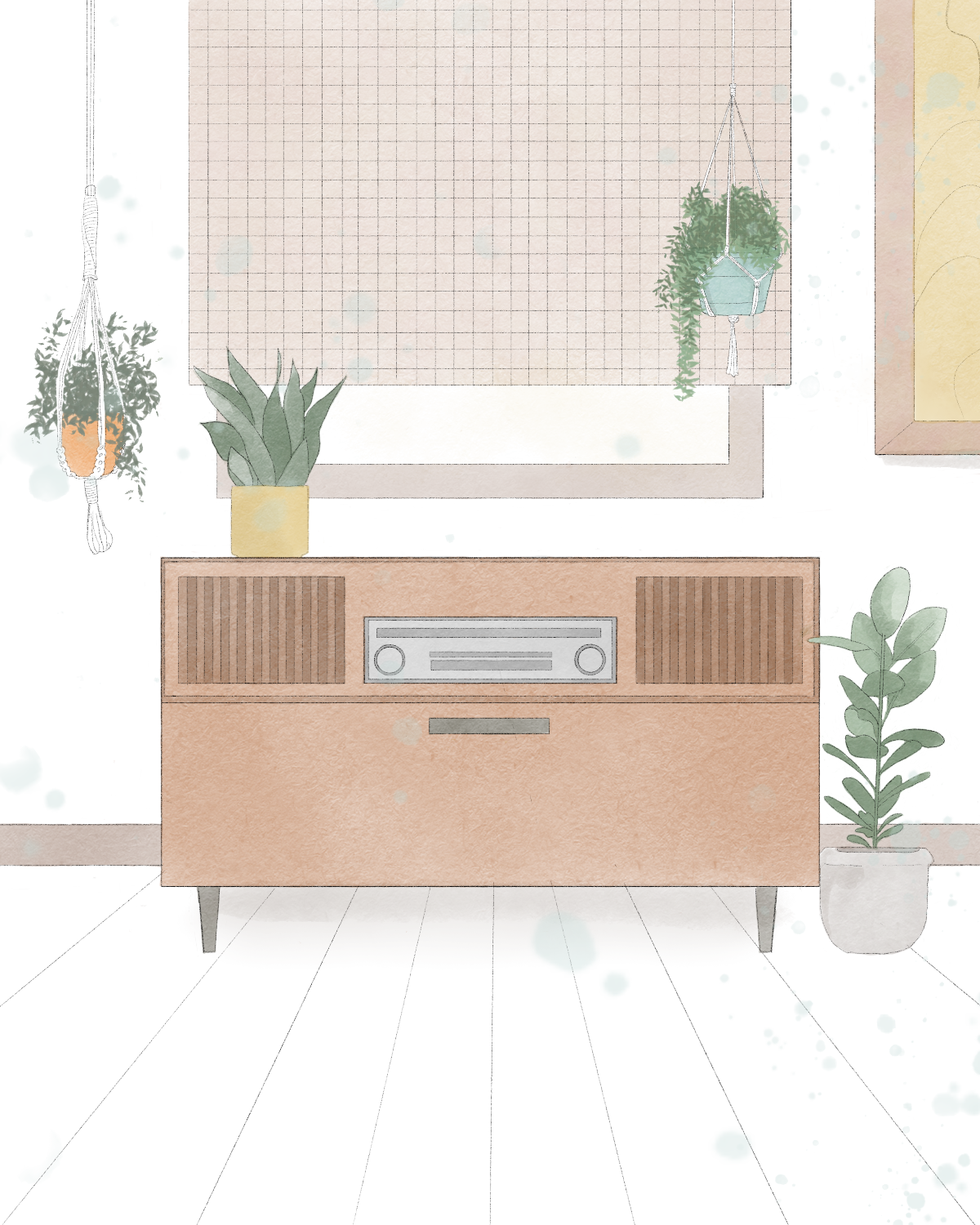
The Palette of the Decade
This fascination with nature, however, extended beyond that of just décor. It also filtered into the colors of the decade. Earth tones, like harvest gold, avocado green, chocolate brown, and rust orange, replaced the psychedelic hues of the swinging sixties, laying the groundwork for kitchens and bathrooms everywhere. Have you ever stumbled across a wood-toned kitchen complete with butcher-block countertops and avocado-green appliances? If so, you have the ‘Me’ decade to thank for that. In an era of political and environmental turmoil, earth tones such as these provided the perfect backdrop to relax and unwind.
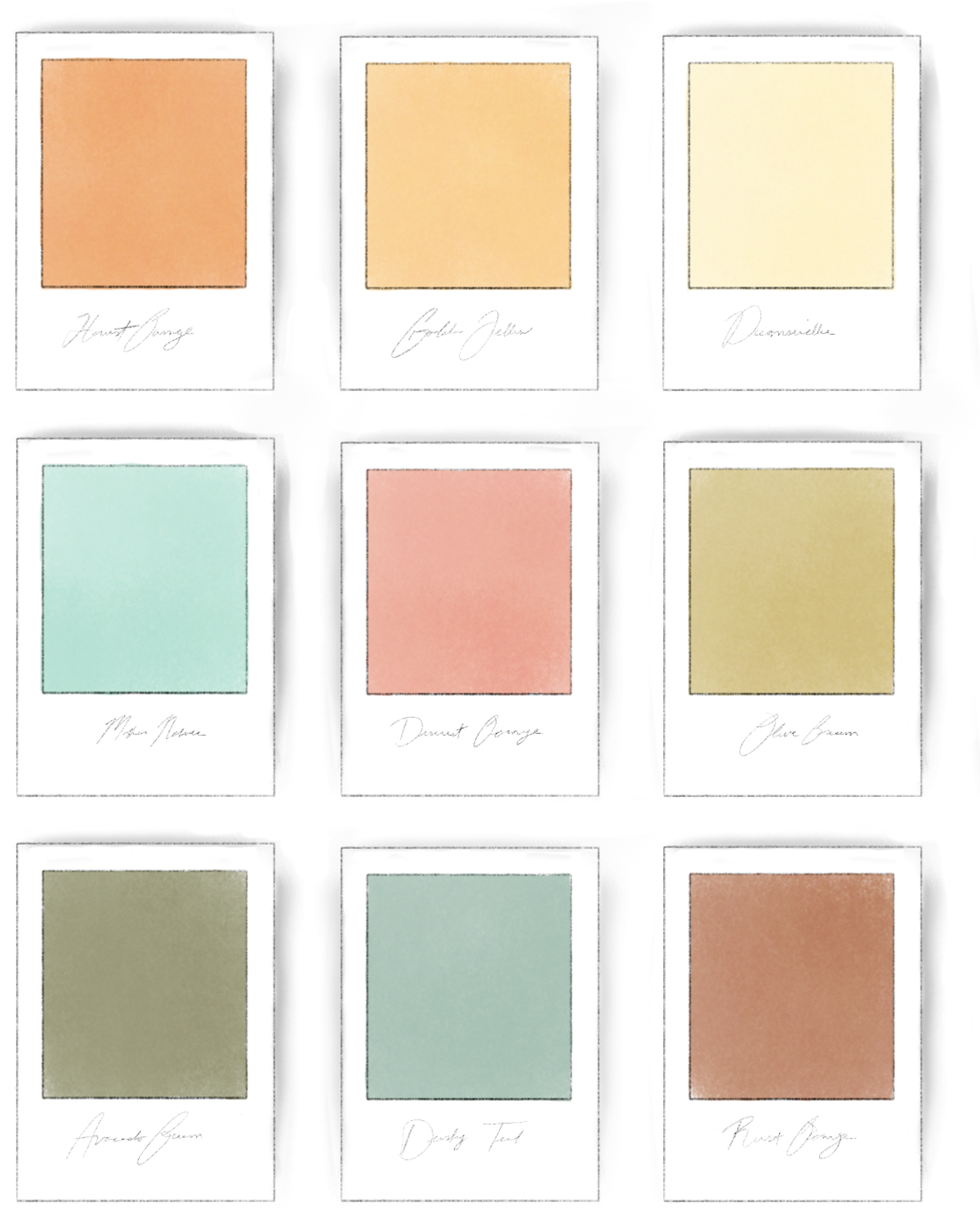
The Furniture of the Era
People's attitudes toward furniture were also changing. Unlike previous decades, which often treated furniture as a seasonal accessory, furniture design in the 1970s took on a more thoughtful, socially conscious approach. Pieces became more modular, durable, and adjustable. Designers gravitated back to natural materials, like wicker, rattan, and leather, which meshed well with the back-to-nature movement of the time. Sofas and chairs were designed to be low-slung, lounge-ready, and to prioritize comfort and individuality above all else. Some standout designs from the time include Michel Ducaroy's Togo Sofa, Frank Gehry's Wiggle Side Chair, and Fred Scott's Supporto Chair.
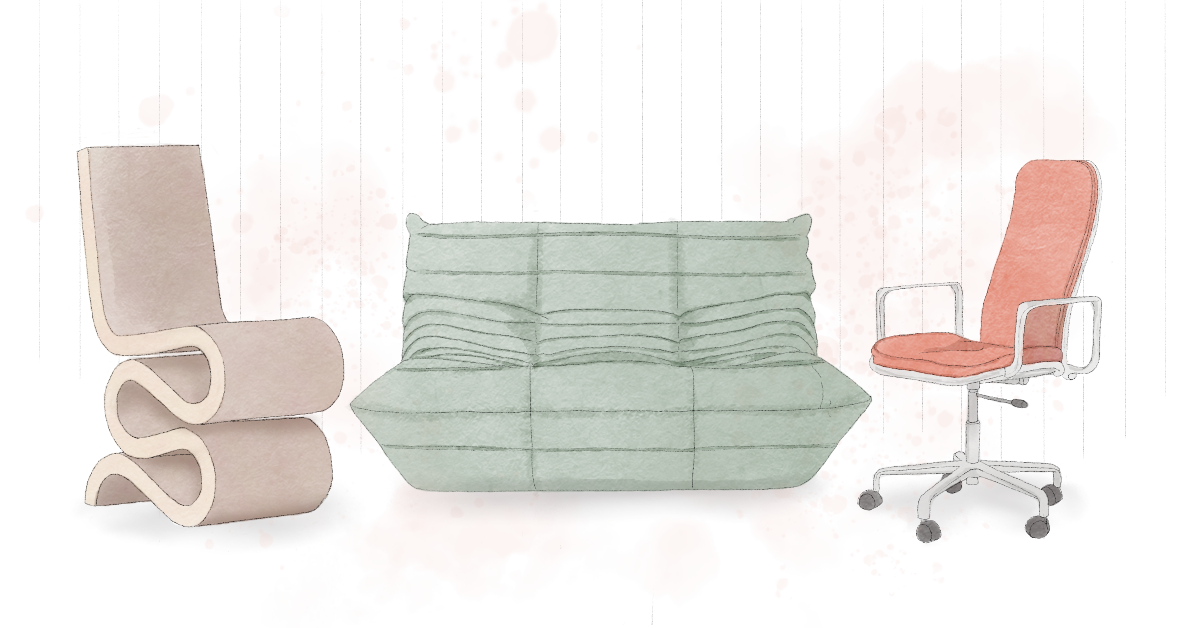
A Longing for the Past
The ‘70s also saw a return of arts and crafts. After nearly two decades of store-bought this and store-bought that, people were longing for a time when things were made, not manufactured. This sense of longing and nostalgia inspired a new era of craftsmanship in the home, otherwise known as handicrafts. People started taking up needlepoint, crochet, flower pressing, and more. But the most popular hobby of the time was macramé—a form of textile art formed through thoughtful knot placements. People made plant hangers, tablecloths, wall hangings, and owls—yes, you read that right, owls—out of macramé.
Owls were a popular motif in the ‘70s, due, in part, to their connection to nature. Following the first Earth Day of 1970, the U.S. Forest Service created a national mascot to aid in their conservation efforts. This antipollution owl, known as Woodsy Owl, appeared on Saturday morning programming with a simple goal in mind: To teach kids to “give a hoot; don’t pollute.” However, this affinity for owls moved beyond that of just the environmentalist movement. It also infiltrated the home. Owls appeared on everything, from planters to lamps to salt and pepper shakers. They even sold macramé kits so people could create their own wide-eyed Woodsy at home.
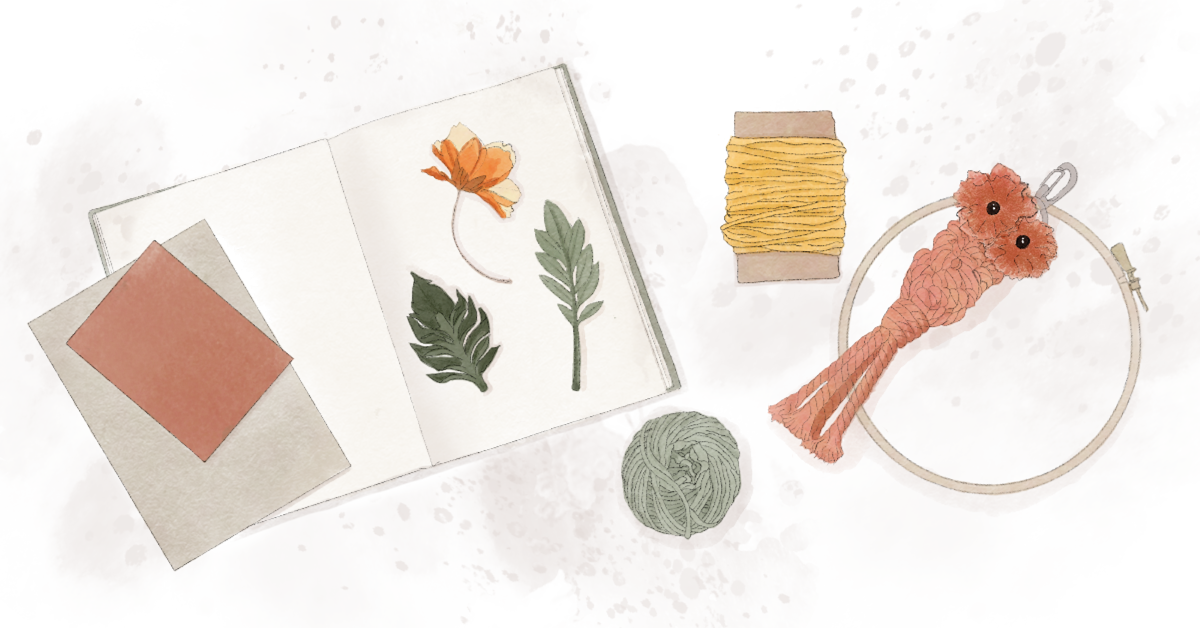
Lafayette Continues to Grow
The back-to-nature movement also had a profound impact on the window-covering industry. The people had spoken, and they wanted something new, something different. So, that humble businessman from Lafayette, Indiana, started manufacturing a new kind of shade: one made from natural elements like jute, reed, and bamboo. He started producing woven wood shades. These elegant solutions allowed homeowners to bring the outdoors in and complemented the cozy, natural aesthetic of the flower-child era.
Joe Morgan Sr. also introduced custom and stock roller shades, aluminum awnings, pleated shades, and vertical blinds into his ever-evolving arsenal. But with all these new additions came a new kind of problem. Room. So, Joe rented, then purchased, another building on Lafayette's Northside—often referred to as the Monon building—and, once again, expanded his empire.
Final Thoughts
What began as a tumultuous decade—fueled by corruption and uncertainty—ended in a period of self-discovery. Looking back, the 1970s serve as a powerful example on how design can help to lead us through the darkest of times. In moments of hardship, it has the ability to soothe, shield, and even help us heal from the outside world.
What are your favorite moments from the ‘Me’ decade? We’d love to hear from you! Join us on Instagram, Facebook, and LinkedIn to continue the discussion.
Lafayette Interior Fashions is a family-owned, to-the-trade manufacturer of blinds, shades, draperies, and other custom-crafted interior fashion products. To learn more about our products, Find a local dealer near you.





